Talented Mr White and his good ship Waterwitch
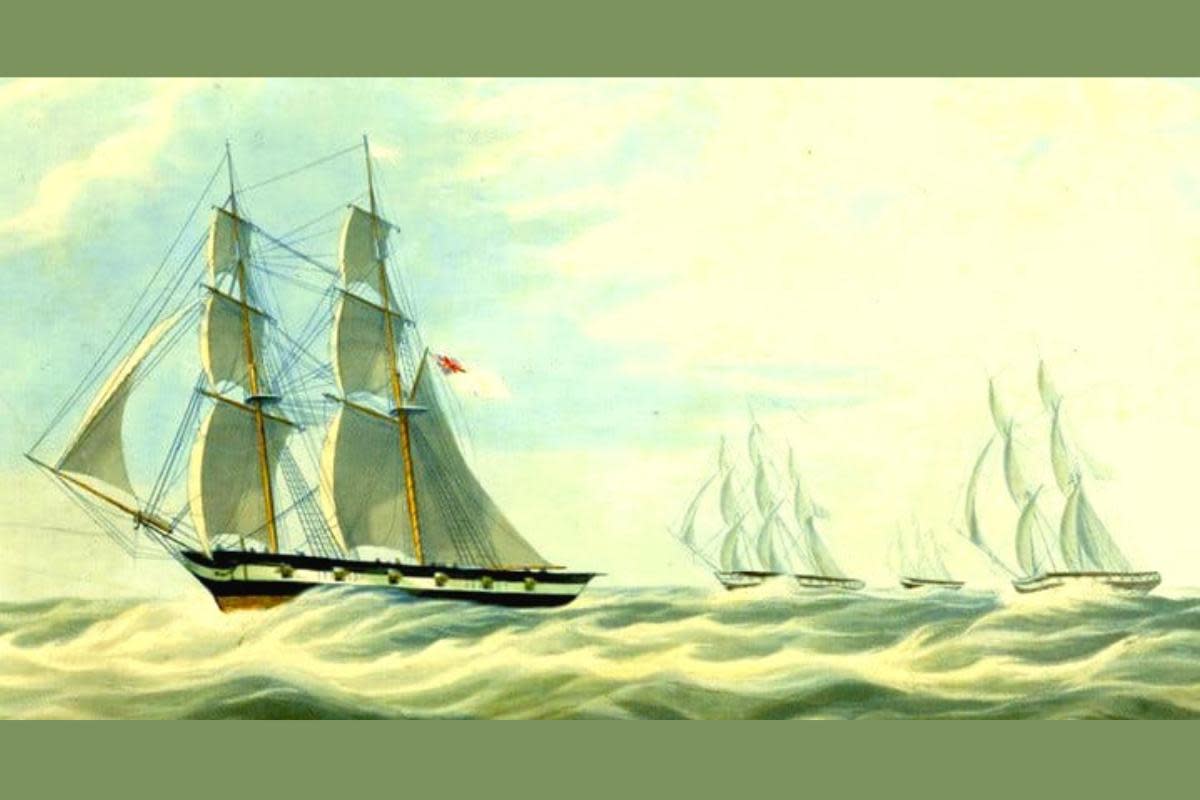
John Samuel White is synonymous with 20th century shipbuilding during two world wars.
A century earlier another battle was fought by the Royal Navy along the West African coast.
At that time Joseph White won shipbuilding fame, now almost forgotten on the IW.
In May 1807, the British government passed the Abolition of the Slave Trade Law. The Royal Navy sent its West Africa Squadron out from Portsmouth to intercept vessels filled with captured men and women destined for slavery.
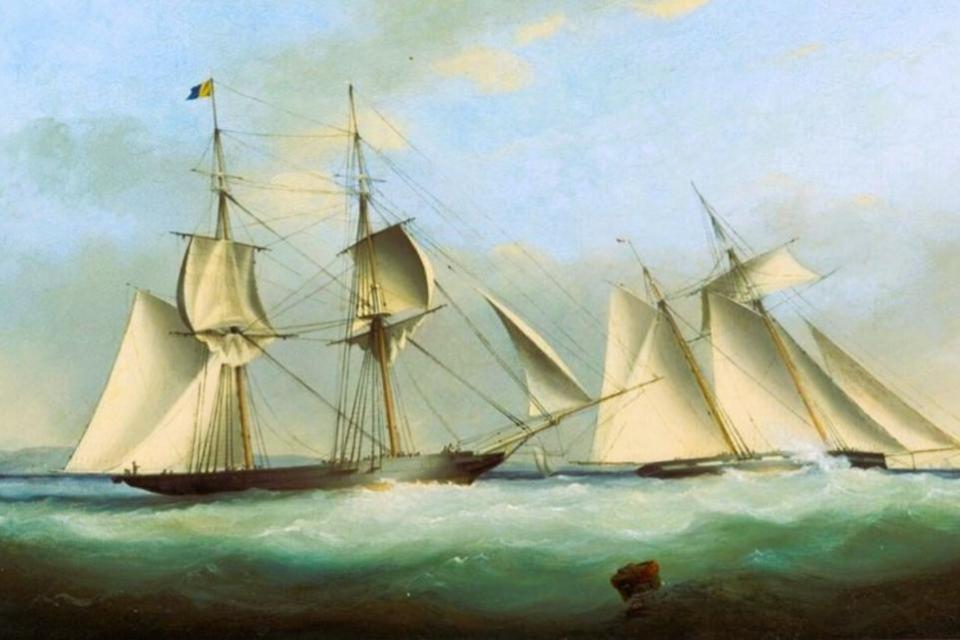
Courtesy of Colin Kemp (Image: Contributed)
The suppression of the slave trade was a dangerous mission that required Navy ships to be faster than pirate slave ships. Too often the Navy was out-raced.
In 1831, three men of the Royal Yacht Squadron (RYS), Cowes, joined together to build the fastest yacht afloat.
Lord Belfast was RYS vice commodore. His new yacht was built by Joseph White at his East Cowes Falcon Yard on the River Medina.
Joseph had a good reputation for constructing quality boats, having learned his trade from his father, Thomas White.
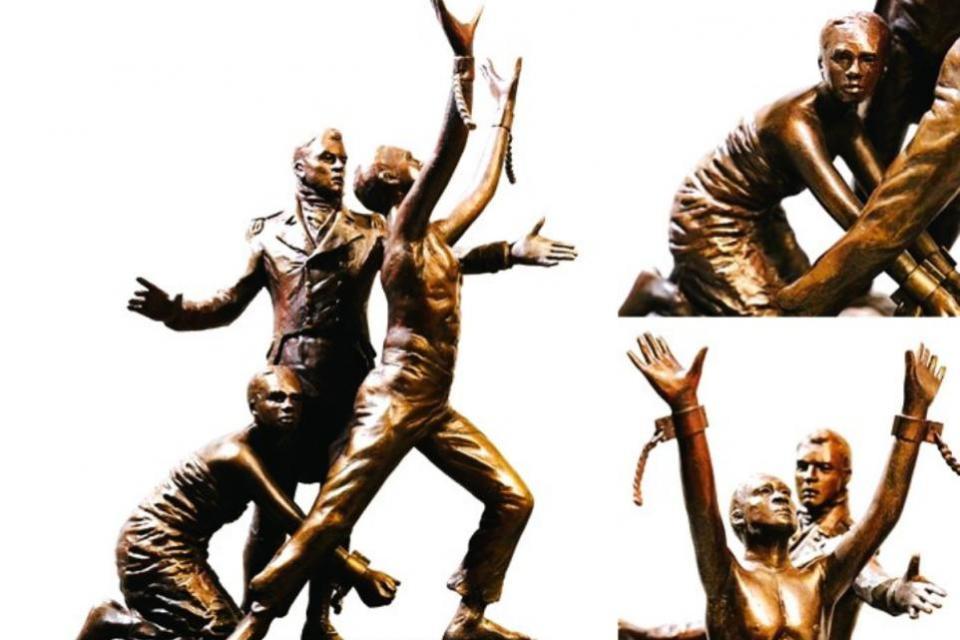
West Africa Squadron memorial statue. Courtesy of Colin Kemp (Image: Colin Kemp)
Newspapers followed the yacht’s construction with much interest. On June 30, 1832, an excited crowd watched the launch of Waterwitch.
George Rogers Ratsey, of Cowes, made the yacht’s sails. Days later, the yacht proved a RYS race winner.
East Cowes man, John Williams, was in the victorious crew. When he died in 1860, he was remembered as, ‘Quartermaster of Lord Belfast’s RYS brig Waterwitch, prior to her acquisition by the Royal Navy’ such was the good ship’s fame by 1860.
The Navy’s purchase of Waterwitch was too slow for Lord Belfast’s liking. He believed she could catch the slave ships.
To convince them to buy her at cost price for the West Africa Squadron, he challenged the Admiralty’s finest to race.
In December 1832, HMS Pantaloon raced Waterwitch in sea trials. Lord Belfast paid British artist William John Huggins to record the event.
His beautiful painting shows Waterwitch ahead of Pantaloon at the finish. The Navy declined to buy her.
A year later, Lord Belfast won £1,100 when Waterwitch won a race against the fastest schooner Galatea.
Finally, in 1834 the Admiralty bought her for £4,000. She was fitted out as HM Brig Waterwitch and served with distinction on the anti-slavery patrol.
Recent recognition of this happened in New York, America in 2019. A scrapbook was auctioned by Swann Galleries. They’ve shared this quote from their Lot: “Joseph White (1801-1876), English yacht builder in Cowes, Isle of Wight, whose most famous ship was the brig Waterwitch that had great success in catching illegal slave traders.”
The scrapbook comprised about 35 documents - drawings, family reports and a letter to Joseph from senior mate James Wilcox.
Written aboard Waterwitch in the Bight of Benin, in August 1839, Wilcox wrote: "On our first arrival here we had an opportunity of trying a rate of sailing with the fastest vessel known on the coast of Africa for some time, a Spanish felucca beautifully equipped and found after a chase of 7 hours. We captured her with 360 slaves onboard. A month later we fell in with a Spanish schooner newly built in Baltimore, considered a regular clipper. After 4 hours chase we captured her with 344 slaves."
The scrapbook sold for $1,500 (£1,200).
In February 2022, four documents from that same scrapbook were sold by Forum Auctions. They’ve shared here one hand written document: "Slave vessels captured by HMB Waterwitch," between 1839-1843, ship names and slave numbers freed. The documents sold for £1,200.
The West Africa Squadron was engaged in dangerous work. 1,600 sailors died fighting the slave pirates or from fatal diseases. The freed slaves were taken to safety in the nearest British port, where they were released.
Queen Victoria ordered a law court to be convened, on St Helena, where slave ship crews were tried. Captured ships were taken to the Cape of Good Hope, South Africa, and destroyed.
The British Parliament was regularly briefed on the squadron’s progress. Waterwitch’s arduous work was praised in newspapers. Joseph’s fame spread and his yard was busy with Admiralty work.
He also built a yacht for the Emperor of Russia and supervised adaptations to the Russian Naval fleet. The grateful Emperor rewarded Joseph with a diamond studded gold snuff box worth £1,100.
Waterwitch returned home in 1843. RYS reported its ‘pleasure seeing an old friend, one of the finest club vessels,’ when she sailed by to Portsmouth Dockyard for a refit.
The crew were lauded for capturing 39 slave ships and freeing 3,000 slaves in four years.
At the same time Joseph submitted a design for a new class of Navy brig.
Days later, Waterwitch’s survey found she was, ‘so defective, her repair for recommission is abandoned and she will be broken up.’
Horrified, Joseph stepped in to save her. Newspapers reported, ‘Mr White will do the repair. The far-famed Waterwitch was towed to East Cowes and hauled up the slipway of her talented builder, amidst the enthusiastic congratulations of the town at this just appreciation by the Admiralty of native talent.’
By January 1844, Waterwitch was, ‘under repair and almost planked up.’ Joseph was also constructing two new 12-gun Navy brigs.
Days later Mr Wakely, shipwright and caulker working on Waterwitch, ‘was injured when he fell off scaffolding and struck his head on a nail projecting from a plank.’ Luckily, he survived.
In Parliament on March 1, Joseph was praised by MPs during the Navy Estimates Debate. Captain Rous said: "The fastest and finest brig I’d seen in our navy is Waterwitch. The Admiralty repairs estimate was £6,400. Mr. White is repairing her for half that."
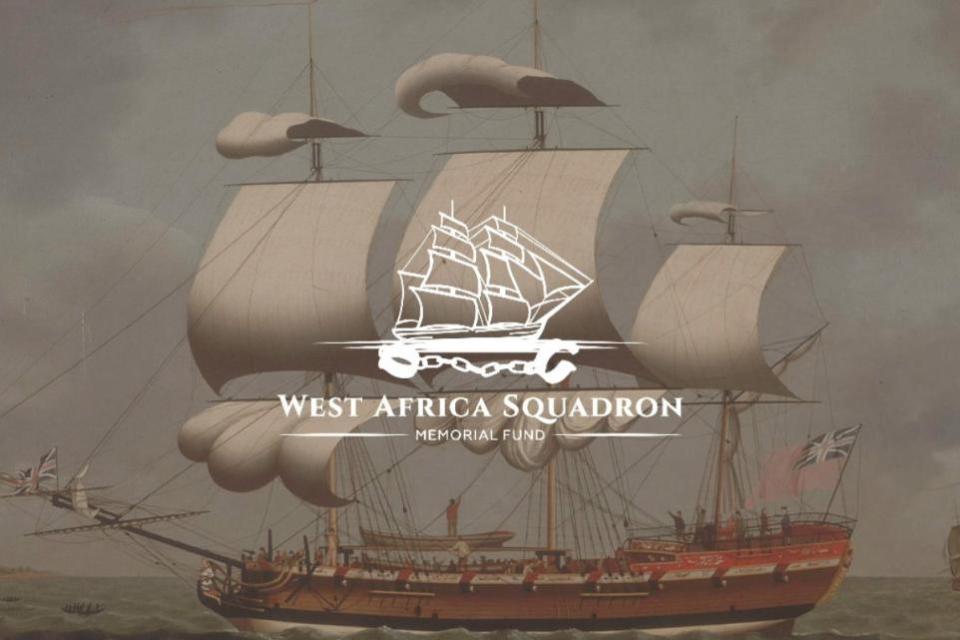
West Africa Squadron memorial fund logo. Courtesy of Colin Kemp (Image: Colin Kemp)
Captain Pechell said: "The Waterwitch returned home with all her sails, masts and rigging, as equipped by a private builder, Mr White, perfect. The services she had performed were almost beyond belief. The number of ships she captured shows the necessity of sending out vessels like Waterwitch to the African coast."
In June, she was relaunched to cheering crowds and towed to Portsmouth to complete her refit. When she sailed back to Africa, the Hampshire Advertiser enthused, ‘The beauty, the winner of all hearts, is Waterwitch, she never looked so well before, gracefulness, boldness, buoyancy, she has everything. She’s said to have the finest ship's company of all the squadron.’
Joseph White died in March 1876, age 75, at home in Providence Cottage, Prospect Road, Cowes.
His obituary recalled: "No vessel was more successful at catching slave ships than Waterwitch, the subject of many a song and toast in this town, one being especially composed in her honour. The ship’s success started Mr White's career and connection with the Admiralty. He was then employed as a naval architect and superintendent in building several men-of-war."
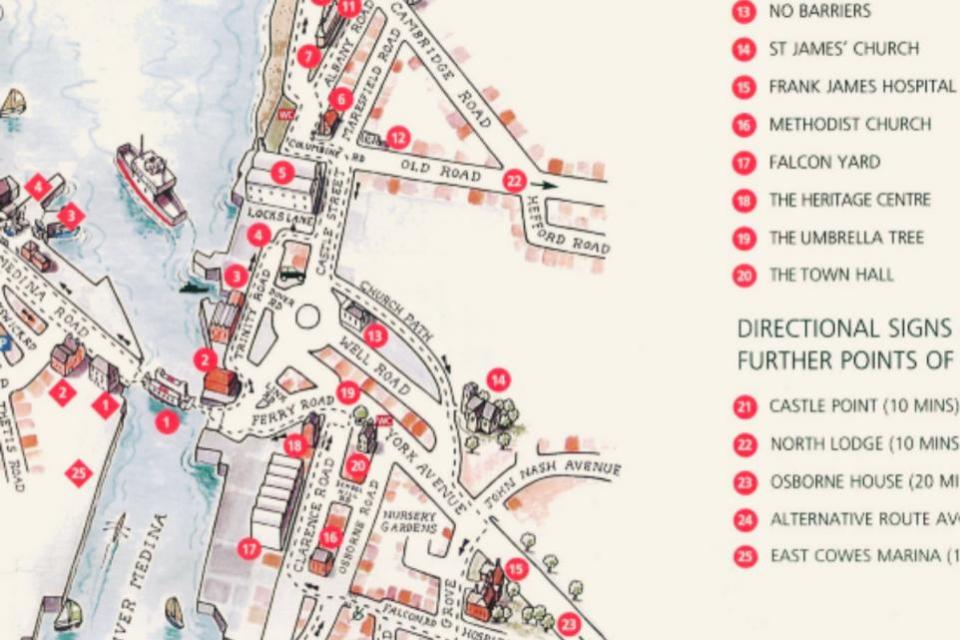
Joseph White Falcon Yard - Cowes Boat Trail map. Island2000 (Image: Island2000)
Today, the Waterwitch sea shanty has disappeared from Isle of Wight memory.
John Samuel White is remembered every year while his kin Joseph is ignored.
Yet his contribution to ending the international illegal slave trade is reflected in soaring auction prices for his scrapbook. Almost 150 years after he died, will the IW now remember with pride the Queen’s Brig Waterwitch and the man who constructed her?
Colin Kemp of Chichester has launched a fundraising campaign for a West Africa Squadron Memorial, for Portsmouth.
Go to https://justgiving.com/crowdfunding/westafricasquadron.
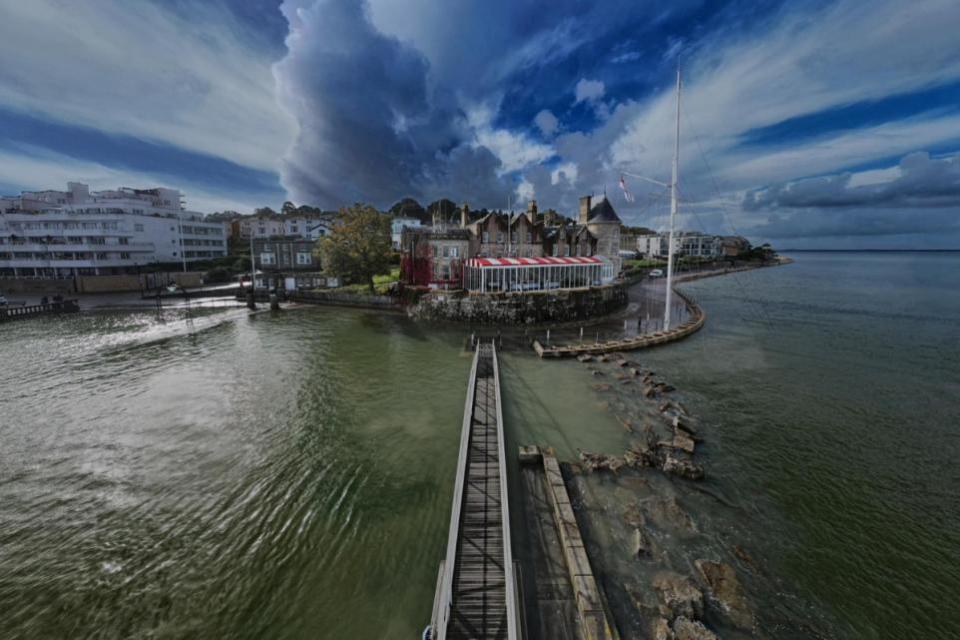
The Royal Yacht Squadron in Cowes. Picture taken in 2023 by Steve Mew of the IW County Press Camera Club (Image: Steve Mew, IW County Press Camera Club)
The 1,600 sailors who died will also be commemorated. The memorial depicts a Navy officer breaking the chains of a man and woman.
If your ancestor served in West Africa Squadron, email editor@iwcp.co.uk
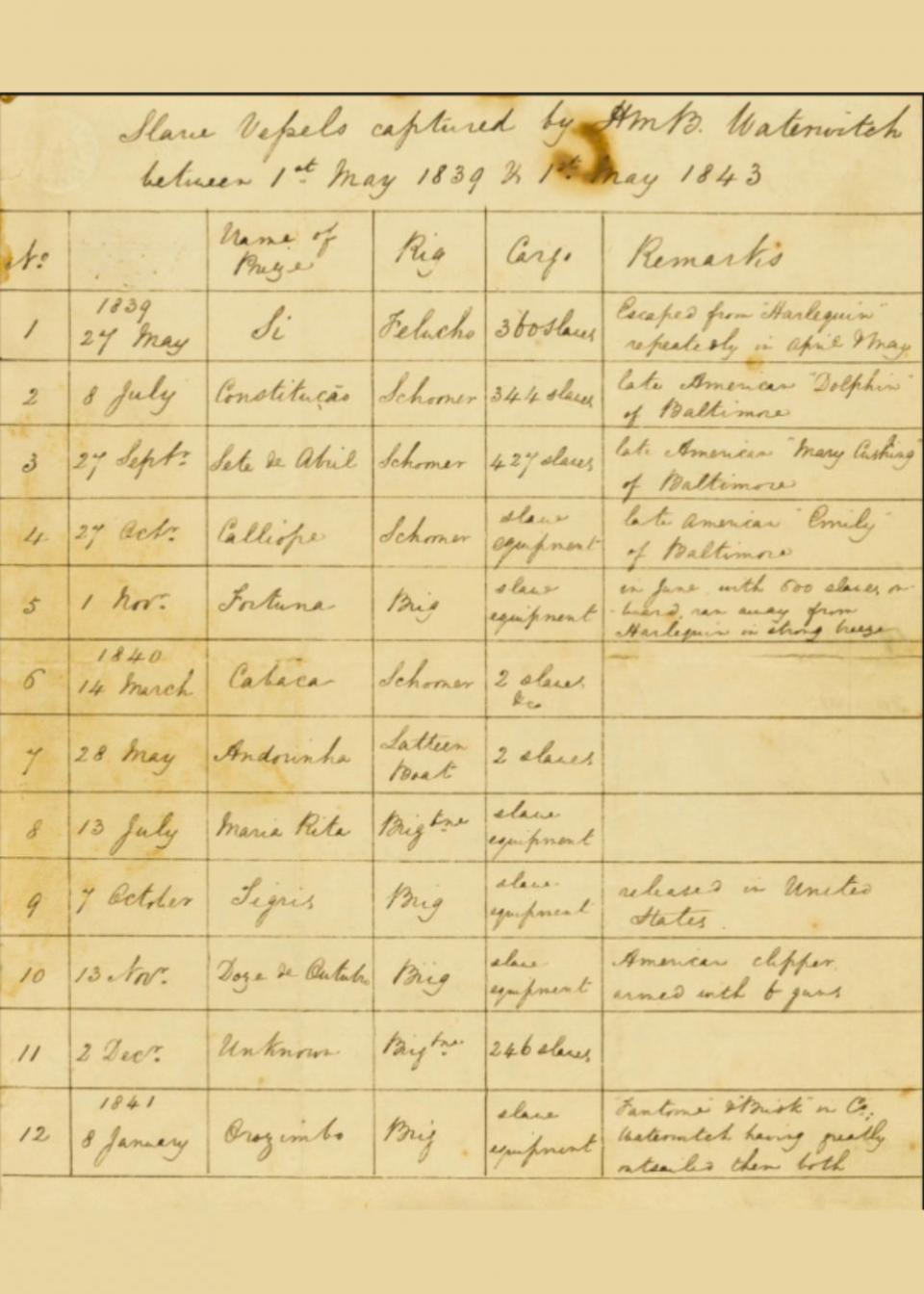
Joseph White scrapbook page slave ships list. Courtesy of Forum Auctions (Image: Forum Auctions)

 Yahoo News
Yahoo News 
